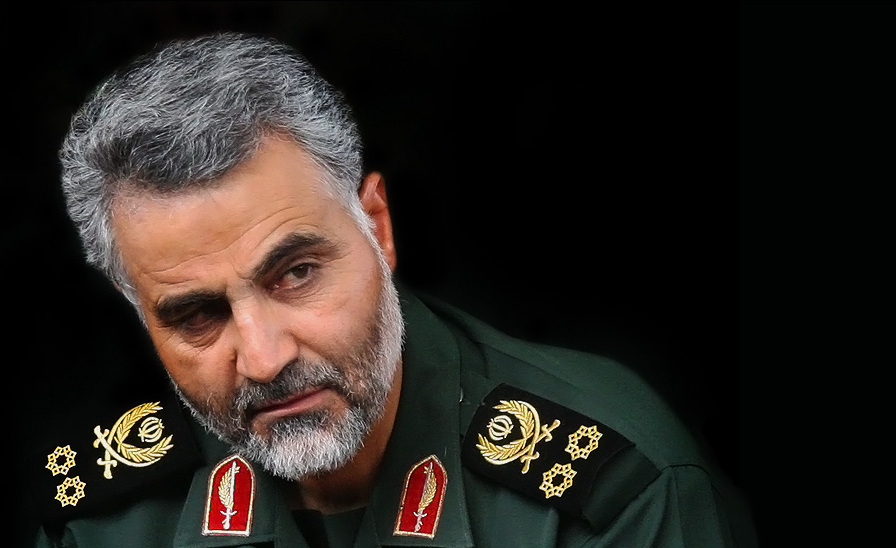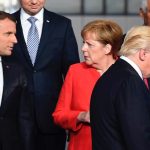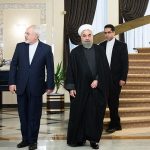by Sajjad Safaei
“I’m not a colonel, I’m a lawyer!” Iran’s current President Hassan Rouhani uttered when his commitment to civil liberties came under fire during the 2013 presidential debate. In an attempt to accentuate the contrast between himself and his rivals—some of whom came from a military background—Rouhani emphatically distanced himself from those whose mindset, as he put it, had been shaped by the logic of the “garrison.”
At the heart of the struggle for reform in Iran lies a deep conundrum: the role of the armed forces in society, chief among them the Revolutionary Guards Corps (IRGC). The organization has been steadily transforming itself into a business conglomerate, while blatantly intervening in all spheres of the country’s political, social, and economic life.
The story of war and its warriors tends to adhere to a familiar chronology: where euphoria ceases, cynicism kicks in. When Iran’s bloody eight-year war with Iraq drew to a close, the Guards refused to return to their barracks. Instead, the organization embarked on an aggressive expansion, extending its reach to nearly every facet of life.
The Rise of Soleimani
By June 2009, the Guards had become virtually unrecognizable. The godly brotherhood once held in high esteem for its sacrifices in defending the nation against Saddam’s invading forces was now involved in cracking down hard on protesters disputing the results of Iran’s presidential elections. The Guards who prided themselves on their devotion to higher ideals were now preoccupied with protecting their economic and political assets.
But then came the Syrian civil war and with it the birth of a monstrosity called the Islamic State (ISIS or IS), which was inching towards Iran’s borders. The Revolutionary Guards were now protecting Iran, if not civilization itself. A happy twist of fate provided the Guards with a long-awaited facelift, and a shadowy general by the name of Qassem Soleimani would emerge as the face of the IRGC’s military operations against IS.
Heroic videos and pictures featuring Soleimani permeated the Internet, often with blood-curdling messages for IS and its supporters. No matter your political stripe, to sing the praises of General Soleimani was synonymous with being Iranian. Overnight, the Guards seemed to have regained, at least to some extent, the standing they enjoyed throughout the 1980s. Except this time around, Iran was not alone. Soleimani was winning when America was losing.
Even Newsweek could not resist Soleimani’s newfound celebrity status: “First he fought America. Now he’s crushing ISIS.” A man in military uniform had become a symbol of Iranian prowess. The Guards seemed destined for greater things.
The Power of Diplomacy
On January 16, 2016, Yukiya Amano, the head of the International Atomic Energy Agency, announced that Iran had significantly scaled back its nuclear program, thus fulfilling its end of the bargain in its negotiations with the great powers in the P5+1. The announcement marked a milestone.
In terms of foreign policy, Iran’s relations with the United States and the world had entered a new phase. After years of painstaking negotiations, the sanctions that had devastated the economy—and the lives of so many ordinary Iranians—were lifted. Tens of billions of dollars of Iranian assets would soon be released. Many of the restrictions imposed on Iran’s trade with world were removed. In the early hours of the lifting of sanctions alone, Iran agreed to buy 114 passenger planes to rehabilitate its aging fleet. Hassan Rouhani could now declare that he had fulfilled one of his most important election promises.
Although the potential economic benefits of this diplomatic achievement cannot be understated, the symbolic nature of this victory for the Rouhani government is no less significant.
As the sanctions, which had caused mass suffering for ordinary Iranians, were lifted, Rouhani said that “as of today, it has become clear that our country possesses a great power by the name of diplomacy.”
Today, the face of that power is unmistakably a Twitter-savvy diplomat by the name of Javad Zarif, and not generals in military uniforms. Ordinary Iranians flicking through the front pages of newspapers a day after the lifting of sanctions were swamped not by reports of military victories in Iraq and Syria under General Soleimani. Instead, the image of Javad Zarif and the president was splashed across the front pages of newspapers across the country. The press has been awash with comparisons between Zarif and national symbols from different epochs of Iranian history: from Arash the Archer, the legendary figure whose arrow supposedly delineated Iran’s ancient borders, to Amirkabir, a 19th-century prime minister who became a national hero for his role in reforming the country and limiting foreign intervention.
At this particular juncture in the trajectory of the 1979 Islamic Revolution, victory has been declared not to the sounds of guns and tanks, but to the computer keyboard of a tweeting diplomat who has become an important face of the Rouhani government.
Just a day before the lifting of sanctions marked a diplomatic victory for Rouhani, it was reported that the Guardian Council, the hardline 12-member body charged with overseeing elections, disqualified a large number of candidates from the upcoming parliamentary elections in late February. Most of these candidates are from the pro-reform camp. Rouhani might be euphoric from the victory on the diplomatic front but he is under no illusions. When asked about the disqualifications, he vowed to use “all” the powers of his office to challenge the Council’s decision and to use the nuclear negotiations with world powers as a model for pursuing its domestic policy goals.
The long and arduous road to reform might yet get bumpier before it smooths out. The implementation of the nuclear deal on January 16, and with it the catapulting of a civilian onto the center stage of power, might have provided Rouhani with an opportune moment for consolidating civilian rule over the business and political ambitions of general Soleimani’s friends in the Revolutionary Guards. Nevertheless, whether the Iranian president and his pro-reform supporters can capitalize on the recent diplomatic victory and turn it into serious momentum towards reform remains to be seen. In the coming weeks and months, the government’s diplomatic might is sure to be put to a serious test.
Photo: Qassem Soleimani
Sajjad Safaei is a PhD student at the Max Planck Institute of Social Anthropology in Germany. He can be reached by email here.






@Sajjad Safaei, very good description of the near past and the current situation in Iran. The civilian and mullahs, including Khameneie, are fearful of a coup by the IRGC should they push them too far or if sideline them. The IRGC is in total control of all matters in Iran as they told Rouhani at the beginning of his election to mind his own business which was the domestic and international politics and Khameneie was silent about the mandate! Just like many other revolutions in the history of mankind though, the Iranian revolution is also bound to follow suit with a military style government. Khameneie did try that following Khatami’s moderate presidency naming Ahmadinejad, a member of IRGC leadership, to take over the government but in civilian clothing by which disaster ensued leaving Khameneie with no option but to abide by the wish of majority in electing a non-military person like Rouhani. Praying for the good people of Iran!
There is a very important principle at play here.
In the immediate aftermath of the Iranian Revolution – and following the flight of the Shah – I thought the Revolutionary Guard would be like Oliver Cromwell’s puritanical roundheads in the English Civil War and that they they would eventually step down or step aside so that a more civilian-style political leadership would replace them.
Don’t forget Cromwell and his supporters cut off the head of the English King, which is much more shocking than anything done in the early days of the Revolutionary Guard gaining power.
I thought – by now – they would be gone but that did not happen, arguably as a result of US support for the 8-year war between Iraq and Iran, which reinforced the role of the Iran military.
What has replaced them is something more akin to Heinrich Himmler’s SS network in Nazi Germany – and I say this as no opponent but as a friend of the Iranian people.
The SS and current fascist-military regimes in parts of the world such as Tel Aviv, Pakistan, Myanmar (Burma) and many other areas usually directly control around a quarter of their national economic activity.
Quite how their grip on power will be loosened and power restored back to the people – who should be the rulers in a proper democracy – still remains a very open question to be answered.